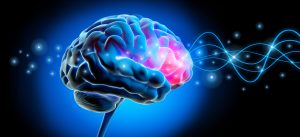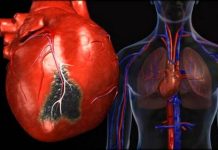These inner dialogs are always with us. They all come from that nagging, always-on, defeatist voice that never shuts up. In Eastern Traditions, we call this the “Monkey Mind.” Science describes that voice as the default mode network or DMN.
-Arno Slabbinck, computer programmer
As a child, you likely had a moment when you essentially discovered that you exist as a separate identity outside of the external world. Starting around the age of 2, children begin developing self-consciousness, the foundation needed for future growth and individuation. Part of this nascent development of self is the idea of performing for others, much like an actor or actress does for an audience.
It is this sense of audience that is the beginning of “you” as someone unique and as a sovereign actor capable of making decisions independent of others.
In his book Saying Goodbye: A Memoir for Two Fathers, the author M.R. Montgomery frames it this way: “There is a thing that happens with children: If no one is watching them, nothing is really happening to them. It is not some philosophical conundrum like the one about the tree falling in the forest and no one hearing it: that is a puzzler for college freshmen. No. If you are very small, you actually understand that there is no point in jumping into the swimming pool unless they see you do it. The child crying, ‘’Watch me, watch me,’’ is not begging for attention; he is pleading for existence itself.”
Recent research has uncovered that this budding sense of self may have something to do with our default mode network (DMN). The DMN is an area of the brain “specializing in internally oriented cognitive processes such as daydreaming, reminiscing and future planning,” according to nature.com. More scientifically, the DMN is a network of structures that include the medial prefrontal cortex, posterior cingulate cortex, the inferior parietal lobule, and the hippocampal formation, among others, depending on who you ask.

Source: library.neura.edu.au
Because the DMN is ultimately a self-referential mechanism, it is vital to creating predictable patterns that we habitually call upon to help define who we are and how we fit into the world and into specific situations. As an article in the European Journal of Psychotraumatology explains, “Recruited predominantly during rest in healthy participants, the DMN is also active during self-referential and autobiographical memory processing – processes which, collectively, are thought to provide the foundation for a stable sense of self that persists across time and may be available for conscious access.”
In this sense, the DMN becomes a reliable well of information we use to judge the value of situations relative to how we refer to or define ourselves. Over time, we habituate access to and use of the DMN, creating a default sort of mechanism.
Psychedelics Today puts it this way: “As we mature, we learn to respond to life’s stimuli in a patterned way, developing habitual pathways of communication between brain regions, particularly those of the DMN. Over time, communication becomes confined to specific pathways, meaning that our brain becomes more ‘constrained’ as we develop. It is these constrained paths of communication between brain regions that quite literally come to constitute our ‘default mode’ of operating in the world, coloring the way we perceive reality.”
However, new evidence points to the idea that our DMN can become highly disrupted as a result of significant or ongoing trauma, thus contributing to Post Traumatic Stress Disorder (PTSD). As Ruth A. Lanius and a group of researchers point out, “participants with PTSD report somatically-based alterations in relation to self-experience, including feelings of disembodiment and related identity disturbances, revealed by reports like, ‘I feel dead inside,’ ‘I feel as if I am outside my body,’ ‘I feel like my body does not belong to me,’ or, ‘I feel like there is no boundary around my body’.”
Using evidence from functional Magnetic Resonance Imaging (fMRIs), Lanius and her colleges specifically found that ”In PTSD, the DMN also demonstrates altered functional connectivity during threat- or trauma-related conditions – a pattern that contrasts sharply with the DMN deactivation observed usually in healthy individuals.”
In other words, when people with PTSD are triggered by something in their environment, their DMN becomes overactive. Over time, PTSD hijacks the DMN, laying down new patterns of self that are intimately linked with the traumatic incident(s), thus coloring our ability to navigate life effectively. Essentially, our sense of self and the trauma become one, an entangled monster that lurks below our consciousness, menacing us with anxiety and forcing us to habitually relive the trauma over and over again.
And because our DMN is involved in actively recalling past events and projecting future traumas repeatedly, it becomes continually hyperactivated by these twodimensions. This hyper, or overactivity of the DMN then manifests as an all-cosuming dynamic. Peter Smith, a holistic counselor in the U.K. argues that “When the DMN is overactive . . .our conscious mind is continuously fed unpleasant or worrying emotional thoughts and feelings; producing a depressed or anxious state of mind.”
The irony is that our reliance on our DMN, once a source of self-security and positivity, has now become a form of survival, thereby reducing us to our lowest level of existence. Lori Goodwin, an Iraqi war veteran, captures this dynamic eloquently: “Even in times of trauma, we try to maintain a sense of normality until we no longer can. That, my friends, is called surviving. Not healing.”
Recently, both the DMN and its role in PTSD have become a central concept of research in psychedelic-assisted therapy. The theory that is beginning to develop is that psychedelic substances, such as those found in psilocybin mushrooms or in ayahuasca (DMT), reset the neural pathways of the DMN by taking advantage of our brain’s inherent neuroplasticity.
Dr. Matt Brown, a psychiatrist who specializes in the treatment of Anxiety Disorders such as OCD, PTSD, Panic Disorder, and Generalized Anxiety Disorder, offers the following analogy: “If you do the same thing repeatedly, it is like you are walking down the same path all the time. Naturally, that path becomes very well-worn and easy to walk down. Psychedelics (due to the reduction of DNM activity) ‘mow the lawn’ so that you can walk down a new path a little bit more easily.”
Part of what’s at play likely involves the dissolution of the ego. In a nutshell, our ego is bound up in our sense of self. Our dreams, our fears, and our memories are merely layers of reality that compose our ego. And to navigate the demands of our industrialized society which prizes individualism and achievement, we need a strong sense of self, or ego. But when that sense of self becomes pathologized by circumstances, when our ego becomes distorted by overidentifying with stress and trauma, we became prisoners of our tortured sense of selves.
In these circumstances, the overactive DMN then becomes like the prison guard that forces us to stay in a place that no longer serves us emotionally or psychologically. But because the space is familiar, because it is connected to who we feel we are on some fundamental level, we seek safe harbor, thus setting the stage for a vicious cycle.
To be free from this vicious cycle, we need a powerful but positive interloper. That is where psychedelics come in. As psychedelic therapists Leia Friedman and Margaret Sharpe write, “Psychedelics, typically at higher doses, have been shown to catalyze ego distortion for some people, even ego-dissolution. These medicines can both ‘quiet the brain chatter’ of the DMN and increase connectivity to create new solutions to the problems of the mind (such as ruminations).”
And though we are only in the beginning stages of understanding psychedelics and their impact upon the brain in general and the role DMN specifically, we are on the precipice of unlocking a new age that will transform how we treat and heal people with a myriad of mental health issues. In doing so, we will likely upset the proverbial applecart of the pharmaceutical industry, which currently owns that world. This is nothing short of a revolution.
As Brad Burge, former Director of Communications and Public Relations of the Multi-disciplinary Association of Psychedelic Studies (MAPS) and psychedelic counselor puts it: “What MAPS is doing is actually using psychedelic drugs to help people get off drugs. Just two or three sessions with these substances are producing lasting changes and people don’t need to stay on their existing medications. We’re helping people liberate their consciousness from these straightjackets of conventional pharmacotherapy.”






